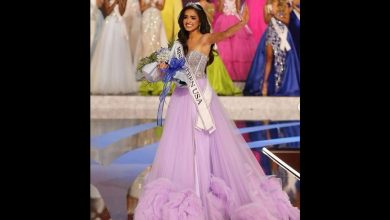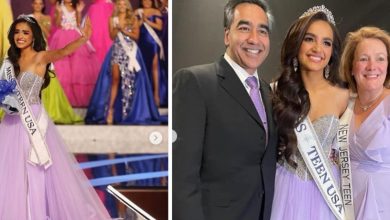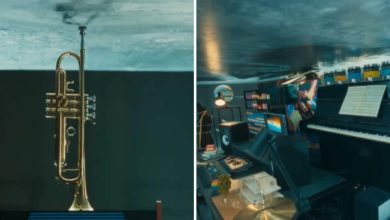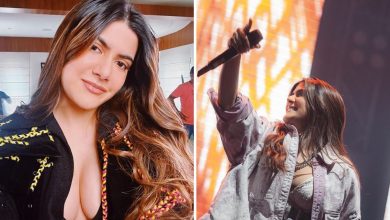The mystery and magic of being Rekha: Retracing her career, choices as she turns 68

How are enigmas created? How does a self-effacing, gauche girl transform into a proverbial swan, creates a career that is written in golden letters, becomes a success story that millions want to emulate and then returns to her own shell? Rekha, born Bhanurekha Ganeshan to film idol Gemini Ganeshan and actress Pushpavalli, is perhaps the closest India has to its own Greta Garbo, who steps out for a rare appearance in a cloud of Kanjivaram as cameras follow her, but never lets her guard down.
The actor, who turns 68 today, never even wanted to be a marquee queen. Her dream was to become an air hostess and see the world. The National Award-winning actor, who now rarely gives interviews, had once revealed how her mother was keen on her getting into acting. She had told BBC in a 1986 interview, “My father, not so much, but my mother really wanted me to work in films. But for at least six or seven years, I didn’t like what I was doing. I was dragged to shoots, I used to do double shifts, I didn’t like it at all.”
Rekha, who made her first appearance on screen as a toddler and was a full-time actress the time she turned 15, added, “I never wanted to become an actor. If you ask most actors, they’ll say that they always wanted to join the film industry, but not me. I never wanted to become an actor, mujhe maar maar ke banaya gaya (I was beaten into submission).”
Her entry into filmdom was not easy. Shamed for her body and colour, Rekha made a tough transition into a femme fatale. If her films and choice of characters made news, so did her life choices. Author and journal Yasser Usman wrote Rekha’s biography Rekha The Untold Story in 2016, which gave a detailed description of her life, career as an actor and personal life.
Talking about how Rekha took on unconventional roles, which are now hailed as female-centric, the author tells that it was her hard work of almost a decade, which brought her the authority to demand such central characters. “There is a reason behind that. Whenever we talk about female oriented roles and big scripts where actress is in focus, I think you have to reach that stage as a star because it is all market driven. We may not remember the odd 100 films which she had done in the 1970s, very few films were successful. There were so many films, even B grade films she did but the late 1970s she had reached a star status. She worked hard to reach that kind of stardom that she could ask the producers and directors to give her the roles.”
The actor is perhaps Bollywood’s first actor to take up ‘female-oriented’ roles. Her work in films such as Khoon Bhari Maang and Biwi Ho To Aisi and others established her identity. The actor also did films such as Mira Nair’s Kama Sutra: A Tale of Love and Aastha: In The Prison of Spring in an era when film actresses were still portrayed as simpering and coy on screen.
Rekha in a still from her film Khoon Bhari Maang.
Yasser adds, “She started in 1969 and then became a huge star late 1970s , so it was her struggle of almost 10 years. After her husband Mukesh Aggarwal’s suicide, she made a comeback with Khoon Bhari Maang. There was no one except Rekha who could do it and it was huge hit of that year. Later, she did a revenge drama Phool Bane Angaare KC Bokadia, which was again a commercially hit film.”
Rekha was not just a film star; she was a fashion icon too. Fashion designer Rick Roy says “(Her choice of) sarees came in much later but she was responsible for pushing fashion for what it was at that time and that’s why Rekha is so iconic. When everyone else was doing something else, I think Rekha would come up with something outrageous. I think everyone from my generation took inspiration from that.” Rekha was not just a pretty face on camera, her appearance off camera was bold and she made a statement through various magazine spreads too.
“Her personality has also been very unapologetic. She was a trendsetter in her own way. For fashion, this is the magic of it. If you are conscious about what you are wearing, you kill that. You have to not care about what you are wearing and have the confidence to pull it off. When everyone else would wear sarees, Rekha would come up with something like a head gear, those bandanas. No other person was doing it at that time. ”
Rekha was a fashion icon ahead of her times. (Photo: Express Archives)
But when did Rekha became a recluse? Yasser believes this transition happened after Aggarwal’s suicide. She was always followed gossip and speculation — her relationships especially with Amitabh Bachchan and death of her husband Mukesh Aggarwal were written about often. Yasser says that Rekha was open about her relationships and often spoke about it freely in interviews but something changed in her after Mukesh’s death, for which she was blamed several sections of the society.
“If you go to her interviews in 1970s in fact till 1984-1985, she was the one talking about these relationships. She herself spoke about them in 100 of interviews and sometimes hinting or even taking names. In my personal opinion if there was no Silsila, there would have been no visuals to the story also… I think more than anything else, the Mukesh Aggarwal episode changed her and she stopped speaking to the media. ”
Actors Amitabh Bachchan and Rekha in a still from their film Silsila. (Photo: Express Archives)
He adds, “When I was writing the book, Rekha didn’t participate in it, I just got a call from her secretary asking what it was about. I interviewed a lot of people, some people hinted (at her relationships) that of course there was something and most of them wanted to focus on her career. My book focused a lot on Mukesh Aggarwal episode. I think that was the most important episode of her life, not because of the interest in her personal life but also because it changed her personally as well as professionally. Like if you see the entire graph of Rekha, she was never a recluse in early 15-20 years of her career. It changed her.”







